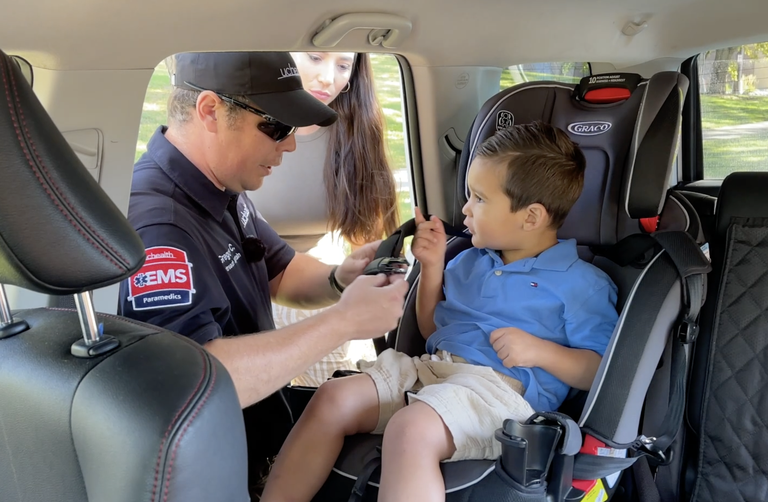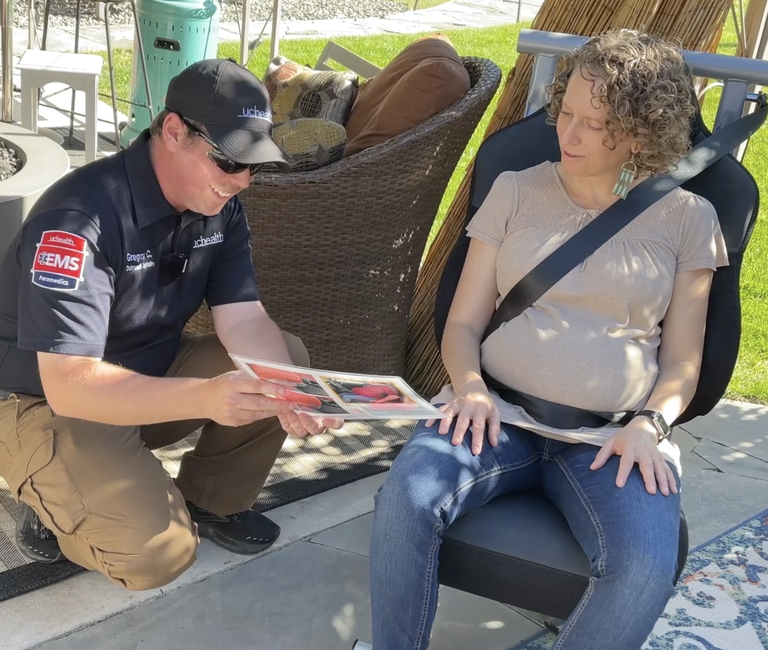¡Abróchalos! Keeping expectant parents and little ones safe
Traffic Safety Pulse News
Recent data from UCHealth EMS/Hudson Center for Prenatal Vehicle Safety shows only 32% of pregnant drivers are wearing their seat belts correctly. Combine that startling statistic with the fact that vehicle crashes are a leading cause of death for children in Colorado and it’s obvious that we need to talk about driver and passenger safety!

During National Child Passenger Safety Week (September 17-23), CDOT wanted parents (including those who are expecting) and caregivers — regardless of their preferred language — to make sure everyone in their vehicle is properly restrained. In partnership with local Entravision station, KCEC-TV, these important reminders were provided to the station’s viewers:
- CDOT Child Passenger Safety in Spanish on YouTube
- CDOT Expectant Parent Seat Belt Use in Spanish on YouTube

Expectant Parents and Seat Belts
According to CDOT, if all pregnant vehicle occupants wore their seat belts correctly, motor vehicle crash-related fetal loss could decline by more than 50%. The National Highway Transportation Safety Administration and the American College of Obstetricians and Gynecologists recommend the following steps for a safe and correct seat belt fit:
- Seat Belt Fit:
- Lap belt placed low under the curve of the belly and resting on the hips.
- Shoulder belt to the side of the belly and diagonally across the center of the chest.
- Shoulder belt crossing the middle of the clavicle, resting on the shoulder.=\
- Vehicle Seat Adjustment:
- Seat back upright, or as upright as the pregnant person can tolerate.
- Seat adjusted back so the belly does not press against the steering wheel and there is at least 10 inches of space between the center of the steering wheel and the chest.
- Seat also close enough so the pregnant driver can press the brake pedal to the floor.
Child Passenger Safety
Three out of four parents in our state think their children are in the right car seat or installed correctly, but they are not. Last year, Colorado’s car seat misuse rate was 66%. Car Seats Colorado www.codot.gov/safety/carseats supports more than 140 inspection stations across the state, some with bilingual technicians available to assist Spanish-speaking parents and caregivers, and inspectors can check to make sure your child’s car seat is the right size and is installed properly. You can find a location and schedule an appointment today by visiting www.nhtsa.gov/equipment/car-seats-and-booster-seats#installation-help-inspection
